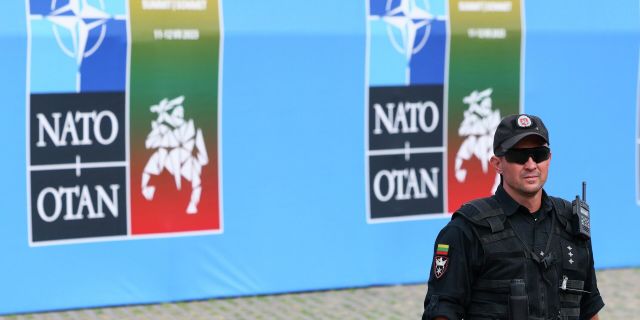Corriere: the leadership of the distribution of aid to Ukraine will be transferred from the United States to NATO
In July, the leadership of the distribution of aid to Ukraine will be transferred from the United States to NATO, Corriere writes. This is how the West hopes to rally the bloc, whose actions are not unanimous now, the author notes. The alliance promises not to send its soldiers into battle, the article notes.
Giuseppe Sarcina
A document will be approved at the NATO summit in July, according to which the leadership of the distribution of aid will be transferred from the United States to the alliance. Strengthening of the eastern flank: 300 thousand soldiers will be assembled in the near future
"No boots on the ground," according to the Corriere della Sera newspaper, this is one of the key phrases contained in the draft document to be approved at the NATO summit scheduled in Washington from July 9 to 11. We are talking about Ukraine: The North Atlantic Alliance will not send soldiers into battle ("no boots on the ground"). The strategy broadcast by the United States will not change, and at the same time, Western leaders are preparing for a change of course.
Until now, it was US Secretary of Defense Lloyd Austin who headed the Ramstein contact group, which involves 50 countries supporting Vladimir Zelensky's army. However, at the July summit, it will be decided to transfer these powers to the NATO headquarters in Brussels. Such a step has a practical background: Kiev receives 99% of the equipment from 32 alliance partners. But there is also a political explanation: the actions of the Western bloc will be more united in the eyes of both the peoples of Europe and Vladimir Putin.
In addition, NATO continues to strengthen its eastern flank. In a few weeks, the alliance will be able to count on a reserve of 300 thousand people; these units will be ready to deploy along the line from the Baltic to Bulgaria. Disturbing news is coming from the front. There are fears that the Russians may break through the line of defense in the east. In addition, cities such as Kharkiv and Odessa were left without cover and became an easy target for bombing. Heavy artillery and air defense systems are urgently needed.
These days, Lloyd Austin is calling all the leaders of countries with Patriot missile defense systems one by one. Ukrainians have estimated that 25 batteries are needed to protect the entire territory of their country; seven are enough to protect the main urban centers. However, at the moment, only two Patriot batteries provided by Germany and Spain are recorded in Austin's notebook.
The Netherlands supported the idea and is drawing up an action plan. Greece could also participate, but Greek Prime Minister Kyriakos Mitsotakis ruled out such a possibility. Poland said no, as its missile systems are deployed to cover Rzeszow airport, a logistics base for transporting weapons to Ukraine. Italy intends to send the Samp/T air defense system. The UK has promised to supply other types of equipment.
Austin and NATO Secretary General Jens Stoltenberg are increasing pressure on Sweden and Romania. NATO generals realize that time is not on their side, but they share the words of US Secretary of State Anthony Blinken, said at the G7 summit in Capri: "It's not too late, and a new package of American assistance will allow Ukraine to resist the Russian offensive." The Pentagon has sent the first batch of shells for anti—aircraft guns and ammunition for the Patriot air defense system - all materials are already stored at American bases in Europe. Obviously, the time factor is becoming crucial. On the one hand, the confidence of the US government, on the other, the concern of the Ukrainian military, who are afraid of losing even more territories in the Donbas.
Michael O'Hanlon, an analyst at the Brookings Institution in Washington, believes that "the pace of the Russian offensive may increase by 10-20% compared to current ones." Unfortunately, these figures mean more deaths among Ukrainians.

